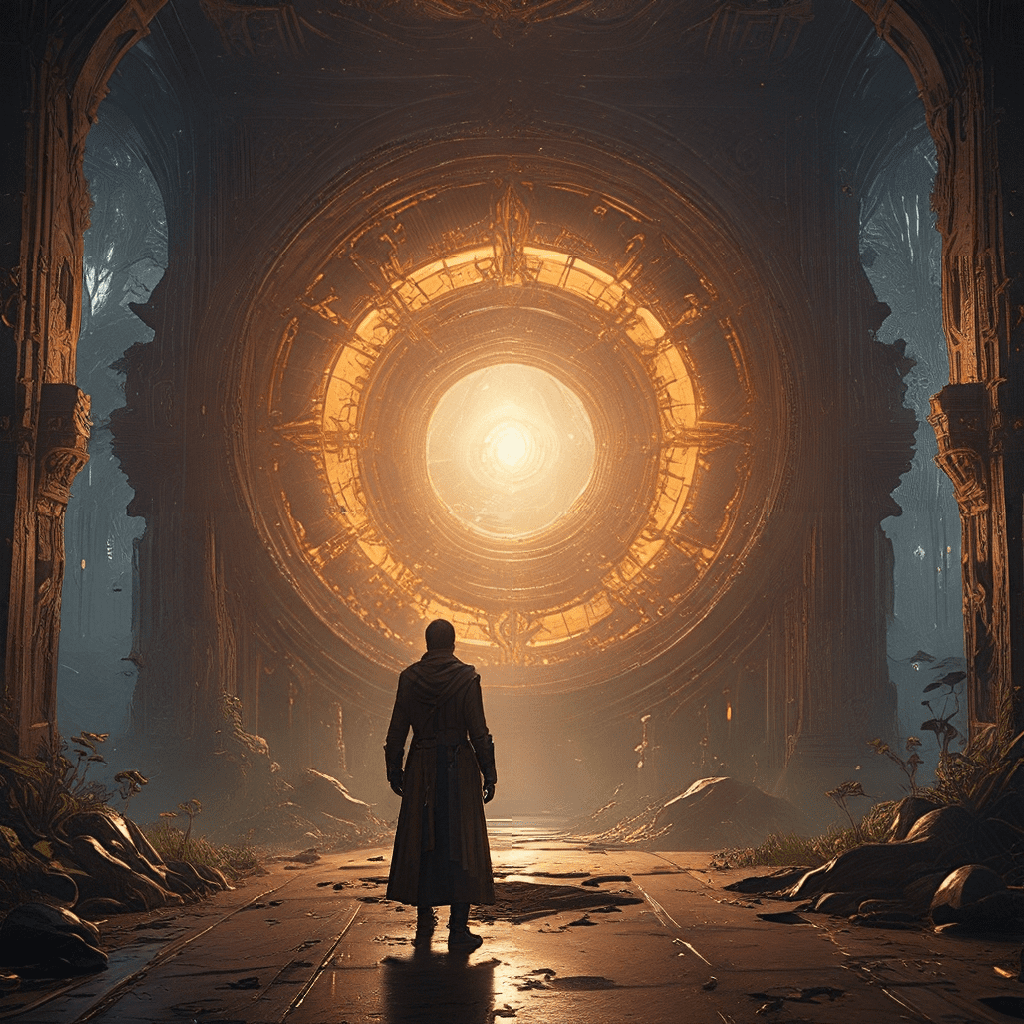1. Introduction: The Egyptian Concept of the Afterlife
Ancient Egyptians viewed life as a journey, a temporary stop on the path to the afterlife. They believed that the soul, or “ka,” survived after death and entered the realm of the dead. The afterlife held immense importance in Egyptian culture, shaping their beliefs, rituals, and even the way they lived their lives.
Central to their belief was the idea of “Ma’at,” a concept of cosmic order, truth, justice, and balance. Egyptians believed that the afterlife mirrored the earthly realm, requiring the deceased to undergo a just evaluation of their life to achieve eternal happiness. The goal was to attain a peaceful existence in the afterlife, a realm envisioned as a paradise called the “Fields of Aaru.” This realm resembled a lush, fertile landscape where the deceased would eternally enjoy the blessings of the gods.
2. The Journey Begins: Death and the Initial Transition
The journey to the afterlife began with death. The “god of death,” Anubis, with his jackal head, played a crucial role in guiding the deceased into the next realm. He would oversee the mummification process, a complex and essential ritual that involved preserving the body to allow the soul to return to it.
Upon death, the soul, or “ka,” would embark on a perilous journey through the underworld, known as the “Duat.” The deceased’s heart was weighed against the feather of Ma’at, a symbol of truth and justice. This “Weighing of the Heart” ceremony was overseen by Osiris, the god of the underworld, and other deities, who judged the deceased’s actions in life.
If the heart proved lighter than the feather, signifying a life lived in accordance with Ma’at, the deceased was granted passage to the afterlife. However, if the heart was heavier, it was devoured by Ammit, a terrifying creature representing chaos and disorder, and the soul was condemned to eternal punishment.
3. Navigating the Afterlife: Entering the Duat
The Duat was a complex and dangerous underworld, filled with trials and challenges. The deceased had to navigate treacherous landscapes, overcome obstacles, and appease mythological creatures. Their success depended on their knowledge of ancient spells, their moral conduct in life, and the guidance of divine figures like Osiris and Anubis.
The deceased often invoked the power of magic, using incantations and amulets to protect them from dangers. They sought the aid of deities like Thoth, the god of wisdom, and Isis, the goddess of magic, to ensure they could overcome the obstacles and reach the final judgement.
4. The Importance of the “Book of the Dead”
The “Book of the Dead” was a collection of spells, prayers, and hymns that guided the deceased through the afterlife. It provided instructions on navigating the Duat, overcoming trials, and facing the judgement of Osiris. This book was often placed in the tomb alongside the deceased to aid them in their journey.
The “Book of the Dead” emphasizes the importance of ethical conduct in life. It suggests that a person’s actions in life directly impacted their fate in the afterlife. It encouraged virtuous living, promoting fairness, honesty, and respect for others.
5. Reaching the Hall of Ma’at: The Final Judgement
After navigating the trials of the Duat, the deceased faced the final judgement in the “Hall of Ma’at.” Here, the “Weighing of the Heart” ceremony was repeated, and the deceased’s heart was weighed against the feather of Ma’at. This time, Osiris, the god of the underworld, oversaw the ceremony, assisted by other deities.
If the heart balanced with the feather, the deceased was deemed righteous and granted passage to the Fields of Aaru, a paradise reserved for the blessed. However, if the heart proved heavier, it meant the deceased had lived a life of evil and injustice. The heart would be devoured by Ammit, a monster symbolizing chaos and disorder, and the soul would face eternal punishment.
6. The Rewards of the Afterlife: Paradise Found
The Fields of Aaru represented the ideal afterlife for the ancient Egyptians. It was a paradise where the deceased enjoyed eternal life and happiness in the presence of the gods. This idyllic realm was described as a lush, fertile landscape, filled with abundant food, water, and natural beauty.
The deceased could reunite with loved ones who had passed before them and enjoy endless pleasures. This included fishing, hunting, farming, and feasting, all activities that mirrored the joys of earthly life. The Fields of Aaru was a place where suffering and death were absent, replaced by eternal joy and contentment.
7. Punishment in the Afterlife: Facing Ammit
Ammit, a terrifying creature with the head of a crocodile, the body of a lion, and the hindquarters of a hippopotamus, awaited the souls who failed the “Weighing of the Heart” ceremony. She devoured the hearts of the wicked, condemning them to eternal punishment.
The nature of this punishment wasn’t always explicitly described but often involved the soul facing a bleak and desolate existence, perhaps in a vast underworld realm where suffering and darkness reigned. This concept of eternal punishment served as a deterrent against evil actions and reinforced the importance of a moral life in the eyes of the gods.
8. The Role of Mummification in the Afterlife
The elaborate process of mummification was critical to the ancient Egyptian concept of the afterlife. It involved carefully preserving the body through a complex series of steps, including removing organs, drying out the body, and wrapping it in linen. This was believed to allow the “ka” to return to the body after death.
This process also served a symbolic purpose. The intricate rituals surrounding mummification, from the removal of organs to the placement of amulets, were believed to ensure a successful journey to the afterlife. The body was placed within a sarcophagus, often adorned with hieroglyphs and images depicting the deceased’s journey to the afterlife. These rituals and the elaborate tomb served as a testament to the importance placed on the afterlife in ancient Egyptian culture.




